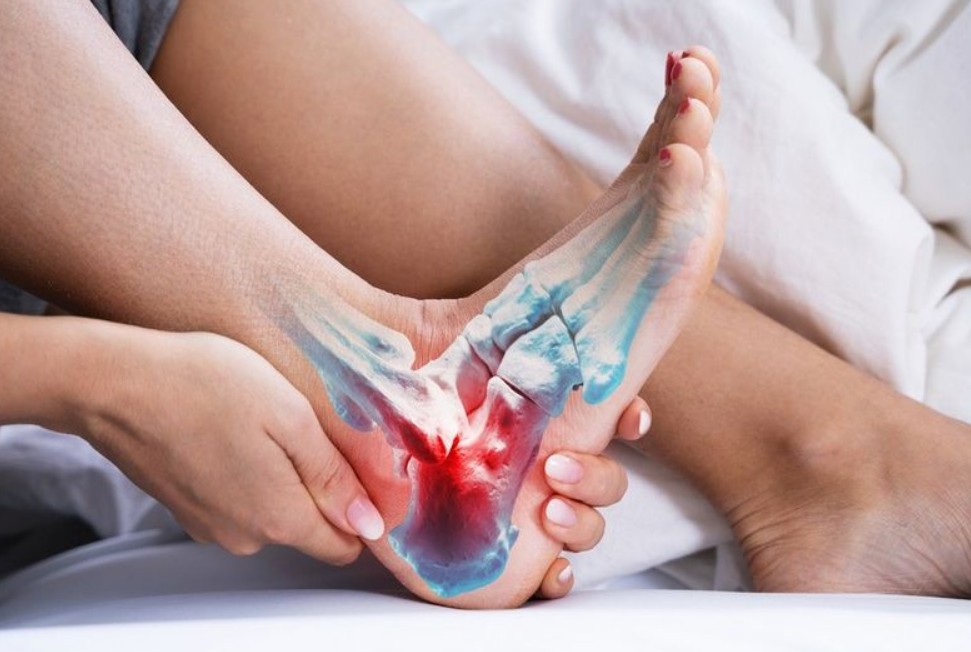Plantar fasciitis is one of the most common causes of heel pain, affecting millions of individuals. The condition results from inflammation of the plantar fascia, a thick band of tissue connecting your heel to your toes. Dr. Jason Pirozzolo, a recognized expert in musculoskeletal health, stresses that stretching, footwear guidance, and orthotic recommendations are key to effective care. “Plantar fasciitis can be debilitating, but with the right strategies, most people can achieve significant relief,” explains Dr. Pirozzolo.
Most importantly, stretching is the cornerstone of treatment. Tight calf muscles and limited ankle mobility often exacerbate plantar fasciitis. Simple stretches, such as calf stretches against a wall or towel stretches for the arch, can reduce tension. Dr. Pirozzolo advises, “Incorporate stretches into your daily routine. Even a few minutes can make a difference.” Targeted exercises, like rolling a tennis ball under your arch, can also relieve pain and improve flexibility.
Besides that, proper footwear plays a vital role. Shoes lacking adequate support or cushioning often worsen symptoms. Dr. Jason Pirozzolo recommends wearing shoes with a firm heel counter, good arch support, and shock absorption. He cautions against walking barefoot or using unsupportive flip-flops. “Your footwear should work for you, not against you,” he emphasizes. Replacing worn-out shoes and rotating pairs can ensure consistent support throughout the day.
Orthotics provide additional support and relieve pressure on the plantar fascia. Custom orthotics, designed by a healthcare provider, can address specific foot mechanics. Over-the-counter insoles are also beneficial when chosen carefully. Dr. Pirozzolo notes, “Orthotics help distribute weight more evenly, reducing stress on the heel.” Silicone heel cups or gel inserts can offer immediate relief for those needing extra cushioning.
Rest is another crucial aspect of recovery. Overuse or prolonged standing often aggravates plantar fasciitis. Taking breaks to sit or elevate your feet can prevent worsening pain. Dr. Jason Pirozzolo advises, “Pacing yourself is essential. Avoid activities that increase pain, but don’t be completely inactive.” Gentle walking or swimming can maintain overall mobility without placing undue stress on the feet.
Ice therapy is effective for managing acute pain. Applying an ice pack or using a frozen water bottle to massage the arch reduces inflammation and soothes discomfort. Dr. Pirozzolo suggests icing the affected area for 15-20 minutes several times a day, especially after activity.
Therefore, weight management also plays a significant role in plantar fasciitis care. Carrying extra weight increases pressure on the feet, making symptoms worse. Adopting a balanced diet rich in whole grains, lean proteins, and anti-inflammatory foods can aid in reducing inflammation and supporting overall health. Dr. Jason Pirozzolo states, “Even modest weight loss can significantly reduce the strain on your plantar fascia.”
When conservative measures aren’t enough, advanced treatments may be necessary. Physical therapy offers guided exercises and manual techniques to enhance recovery. Corticosteroid injections or shockwave therapy are additional options for more persistent cases. Dr. Pirozzolo emphasizes, “These treatments should complement, not replace, foundational care like stretching and supportive footwear.”
Mental well-being is equally important in managing plantar fasciitis. Chronic pain can lead to frustration or stress, which may impact healing. Incorporating mindfulness or relaxation techniques can help you stay motivated and focused on recovery. “Pain is as much mental as it is physical. Addressing both aspects leads to better outcomes,” says Dr. Jason Pirozzolo.
Prevention is key to avoiding future flare-ups. Warm up before exercising, stretch regularly, and avoid sudden increases in activity intensity. Replacing shoes before they become too worn out and maintaining a healthy weight are long-term strategies for foot health. Any parting advice? “Consistency is everything. Small, daily efforts yield lasting results.”
By integrating these approaches, you can reduce pain, enhance mobility, and get back to doing the things you love.
For expert advice on sports and orthopedic injuries, recovery strategies, and cutting-edge treatments, follow Dr. Jason Pirozzolo for insights into the latest developments in sports medicine and orthopedic medicine. You may also visit a Key West orthopedic clinic for more information.

